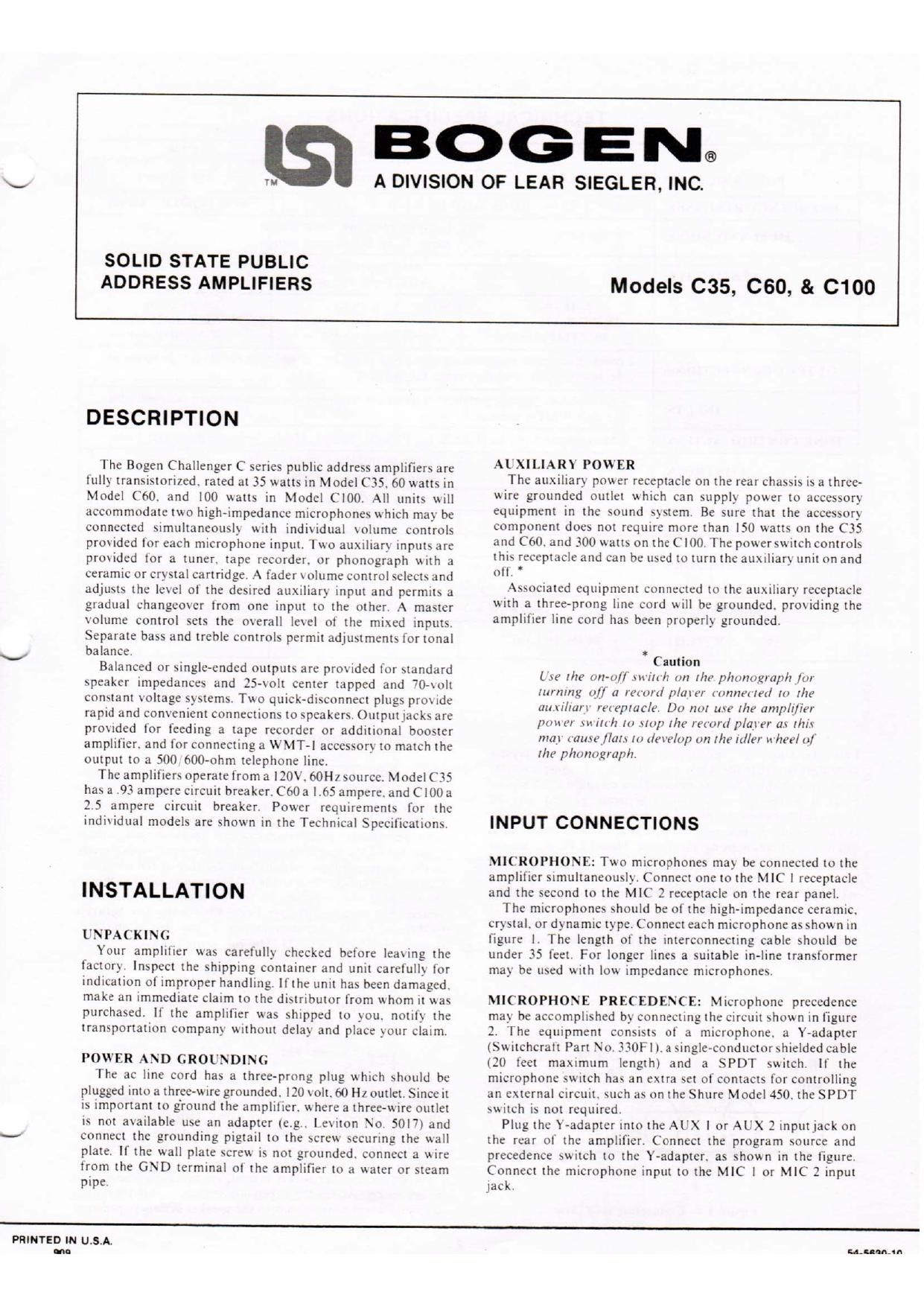Bogen C 35 C 60 C 100 Operating Manual
This is the 6 pages manual for Bogen C 35 C 60 C 100 Operating Manual.
Read or download the pdf for free. If you want to contribute, please upload pdfs to audioservicemanuals.wetransfer.com.
Page: 1 / 6
